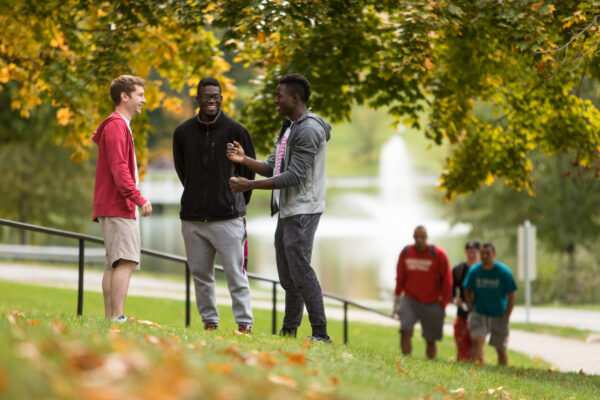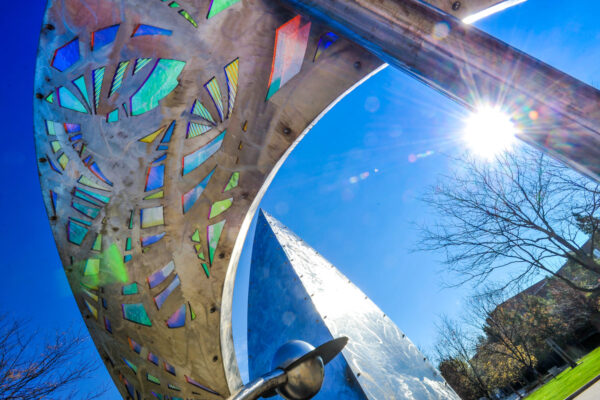By Jon Fansmith
In higher education, we tend to think of “access” in terms of a very specific set of issues. Predominantly, we use the term to talk about how low-income students or students from underrepresented groups enter higher education. But increasingly, there’s another kind of access that is drawing the attention of policymakers: access to postsecondary education for students with disabilities. Much like the ongoing discussions regarding affordability and inclusiveness that dominate the traditional access discussion, accessibility for students with disabilities at colleges and universities is a complex, multi-faceted issue.
Every college president knows what they need to do to make their campus physically accessible—understanding the need for curb cuts, wheelchair ramps and similar accommodations is universal at this point. But understanding the complicated interactions students and staff have with the dozens of (often overlapping and constantly changing) levels of technology employed on a campus is far different, and meeting their needs requires a range of solutions.
The explosion of innovation in educational technology (and institutions’ rapid adoption of emerging technologies) holds out tremendous promise for all students, but perhaps especially for students with a disability. The ability of new technologies to be customized to an individual’s specific abilities offers amazing potential to tap every student’s (and employee’s) talents.
None of this is new for higher education leadership. Schools have been working for decades to improve how they serve students with disabilities, and the opportunities and challenges posed by technological advancement has only intensified those efforts. This is a natural role for institutions, as it’s one we’re already performing. Colleges and universities lead the way in developing accessible technologies and adapting existing technology to meet the needs of people with disabilities. As just one example, the World Wide Web Consortium, the international community that issued and maintains the most widely accepted set of online accessibility standards, is hosted and supported in large part by the Massachusetts Institute of Technology.
So many colleges do a great job educating students with disabilities, but all institutions could do better, and some are not doing nearly enough. And that’s a real problem. According to the Department of Education, as of 2012, nearly 3 million undergraduate and graduate students had a disability, which is over 10 percent of all postsecondary students. That’s a big jump from just over 6 percent of students in 1995, and the current numbers are surely higher. This is a good thing, the legacy of decades of IDEA (the legislation overseeing how K-12 schools serve students with disabilities) preparing students with disabilities to enter postsecondary education combined with a growing understanding of the scope of learning disabilities. It also highlights the importance of getting it right.
Understandably then, there is great interest among policymakers in seeing what can be done to further enhance, improve and expand the use of accessible technologies. Nearly all of this discussion at the federal level has focused on the intersection of technology and accessibility, and much of it has focused on defining standards of accessibility. The complexity of such a task is obvious. The recent Supplemental Advanced Notice of Proposed Rulemaking on web accessibility released by the Department of Justice for public comment is a good example. The notice posed over 100 questions to gather information on developing appropriate standards for accessibility of public entities’ (including public colleges and universities) web presences.
This search for achievable standards is a response to a bigger problem campuses face in creating a welcoming environment for students with disabilities. While much of this work is being pioneered on college campuses, that doesn’t mean all institutions are on equal footing when it comes to finding technology that is actually accessible. There is a substantial information gap that poses challenges for the information technology and disability support services staff looking to ensure their campuses are accessible, not to mention for faculty and staff trying to ensure that course content and materials can be equally employed by all their students.
Many products come to market without accessible features built in, relying on subsequent versions to add them. Institutions regularly find conflicting or erroneous information in the marketplace regarding accessibility when they’re purchasing technology. And often, when institutions select accessible technologies they may not be useful for all types of disability. As just one example, an e-reader where the text can be magnified would meet the needs of a person with certain visual impairments, but unless it also includes a text-to-speech function, it would be useless to someone who was fully blind.
That’s why I was proud to work as part of a team that included representatives from the National Federation of the Blind, the Association of American Publishers, EDUCAUSE and the Software and Information Industry Association to put together a proposal for legislation to address this issue.
Those discussions weren’t always easy—each group spoke not just for their members, but also as representatives of the broader disability, education, publishing and technology communities. Each group approached this challenge from a different perspective, and the resulting product was a true collaboration.
In partnership with Reps. Phil Roe (R-TN) and Joe Courtney (D-CT), our proposal formed the basis for the Accessible Instructional Materials in Higher Education Act, introduced last month as H.R. 6122. The bill has gained support from a growing number of higher education and disability groups, and we hope to see a companion bill introduced in the Senate soon.
The bill would create a commission of stakeholders to review existing technology standards and identify where the gaps of significance to higher education exist. It would then produce voluntary guidelines on accessibility that institutions could use to inform their usage of technology.
The value of having a common set of voluntary guidelines informed by the expertise of all the relevant groups goes well beyond filling the knowledge gap on campuses. A direct benefit of setting up guidelines is that vendors will know the standards institutions will be looking for, helping to guide the marketplace and shape the development of the next wave of products colleges and universities will need. Our hope is that H.R. 6122 will be included when Congress takes up reauthorization of the Higher Education Act next year, and we’ll be working to make sure it is.
If you have any questions or comments about this blog post, please contact us.



